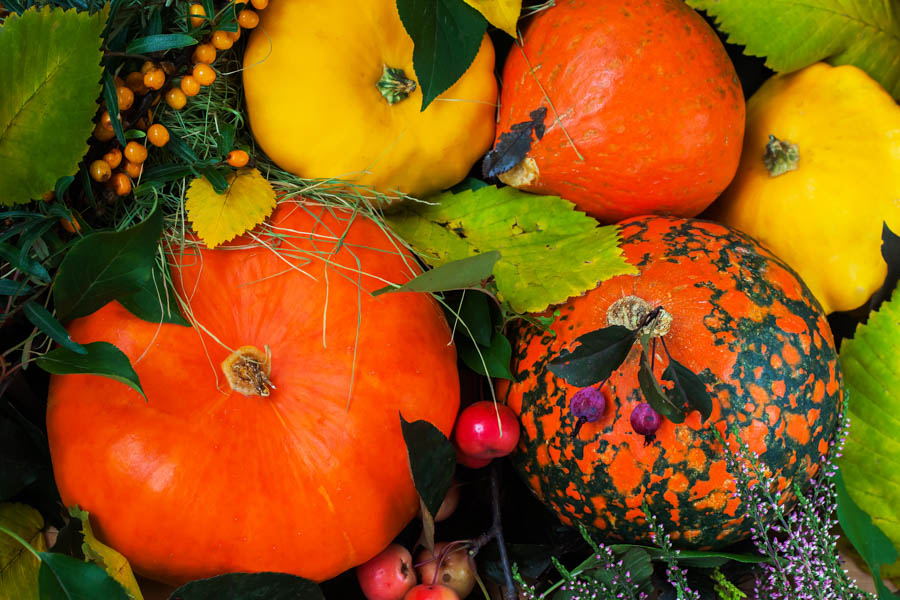Making Friends with Winter Squash: A GardenZeus Guide to Types, Species, and Characteristics

A tomato is a tomato (Solanum lycopersicum) and corn is corn (Zea mays), but what about a winter squash? It could be any of 5 or more different species. The term “winter squash” doesn’t have a precise botanical or taxonomic meaning.
Getting to Know Winter Squash by Species:
There are 5 main species in the Cucurbit family that are grown as winter squash; Cucurbita pepo, Cucurbita maxima, Cucurbita moschata, Cucurbita argyrosperma (formerly Cucurbita mixta), and Cucurbita ficifolia. Most winter squash grown in California and the United Sates are from 3 of these species, pepo, maxima, and moschata.
Cucurbita pepo types include acorn, spaghetti, and delicata types, as well as many jack-o’-lantern and smaller pumpkin and ornamental varieties. Most summer squash varieties including zucchini also belong to this species. Pepo varieties are the earliest to mature (often 80 to 100 days), generally are not cured, and have a shorter storage life than other winter squash types, generally weeks to a month or two depending on variety. Pepo types may have a much longer storage life than commonly suggested if grown to full maturity, cured property, and stored under cool, dry, dark conditions. Delicata squash are very sweet, with skin that can be eaten when cooked. Spaghetti squash can be eaten immature like a summer squash or mature as winter squash with long, spaghetti-like strands that separate when cooked and can be served like pasta.
Cucurbita maxima types include banana, buttercup, hubbard, kabocha and many others, as well as most giant pumpkins that are grown for competitions. Most maxima varieties need a long growing season, and are more prone to insect problems than pepo and moschata, especially during hot summers or stressful environmental conditions. Hubbard squash is so popular with cucumber beetles that some gardeners grow it to attract the beetles away from other squash varieties. Most maxima varieties, both large and small, can be grown as ornamentals or pumpkins for Halloween and fall decoration, then cooked and eaten as squash that are much more flavorful and versatile than most pumpkins grown or sold for holiday decoration.
Cucurbita moschata types include include butternut squash, and cheese squashes that may also be used as pumpkins. The name “cheese squash” was inspired by prominent ribbing in fruits such that they may resemble a wheel of cheese. Squash from this group are often used for baking and making desserts, including pumpkin pie mixes. Moschata varieties need a long growing season, and are the most heat-tolerant of the 3 common winter-squash species; they generally perform better than pepo or maxima varieties in hot-summer California areas.
Cucurbita argyrosperma (formerly Cucurbita mixta) is one of the few cucurbit species that is adapted to arid, hot summers. Argyrosperma varieties include traditional Native American staple varieties grown in the Southwest, such as Cushaws.
Cucubita ficifolia is less well-known in the United States, and includes the Chilacayote gourd, which is often grown for its seeds, and can be grown as a perennial in mild-winter California areas.